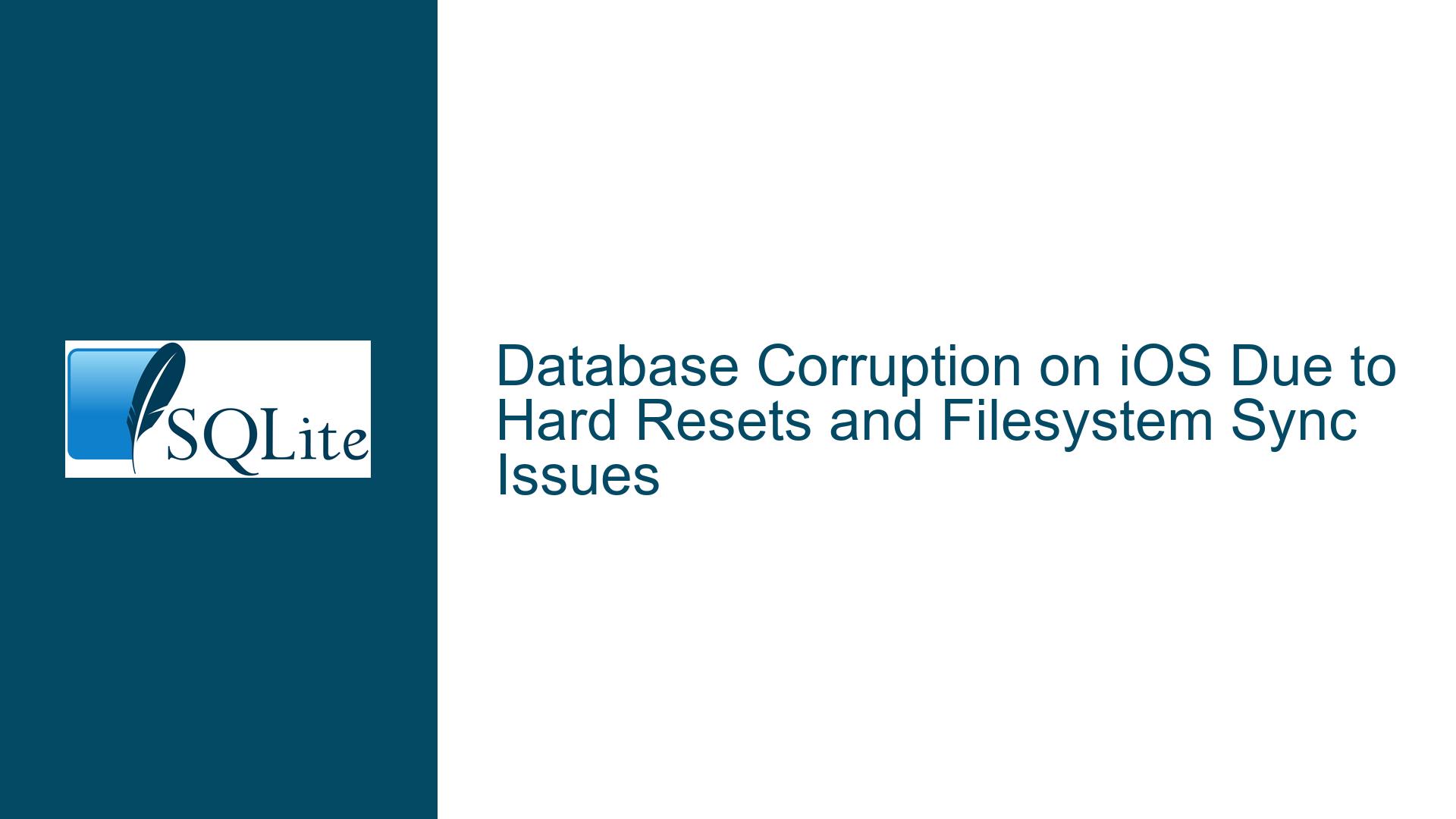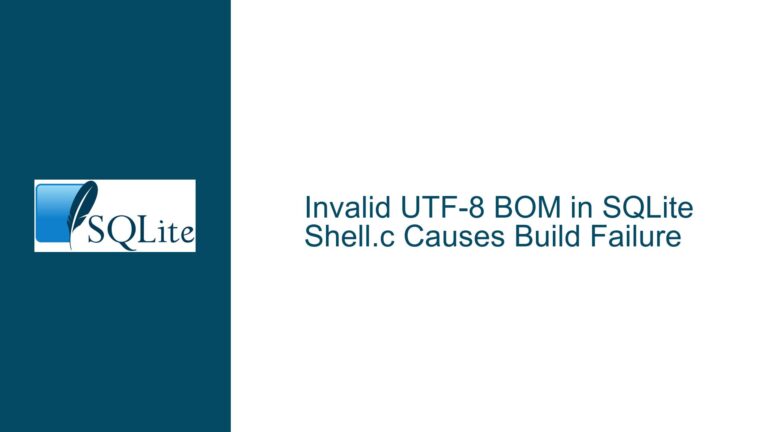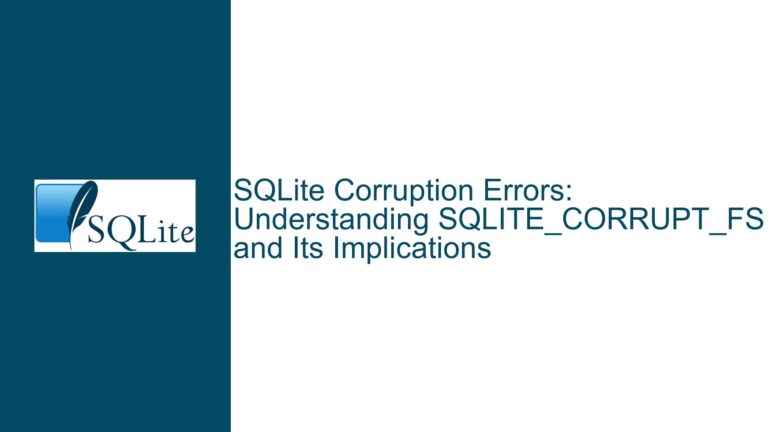Database Corruption on iOS Due to Hard Resets and Filesystem Sync Issues
Understanding Database Corruption on iOS After Hard Resets
The core issue revolves around database corruption occurring on iOS devices, specifically when a hard reset is performed. A hard reset, which involves holding the home and power buttons until the device powers off abruptly, simulates scenarios such as kernel panics, OS crashes, or sudden power loss. This action can lead to extensive database corruption, particularly when SQLite is used in conjunction with Couchbase Lite on iOS. The corruption manifests as bTreeInitPage failures and invalid page numbers, indicating that the filesystem’s sync mechanisms may not be functioning as expected. The corruption is detected early in the test suite via PRAGMA integrity_check, which reveals significant damage to the database structure.
The issue is exacerbated by the fact that iOS, like many mobile operating systems, employs aggressive caching mechanisms to optimize performance. These mechanisms delay writes to permanent storage, which can lead to data loss or corruption if the device loses power or crashes before the cached data is written to disk. This behavior is not unique to iOS; it is a common challenge across mobile operating systems, including Android, where similar issues have been reported. The problem is further compounded by the use of Flash memory, which is inherently slower for write operations, prompting the OS to cache writes in memory until the device is idle.
Exploring the Role of Filesystem Sync and OS Behavior
The primary cause of the database corruption appears to be related to the filesystem’s sync behavior. When a hard reset occurs, any pending writes that are cached in memory but not yet flushed to disk are lost. This results in an inconsistent database state, as some changes may have been written while others were not. The issue is particularly pronounced on iOS, where the OS may not fully honor sync requests, leading to data durability issues. This behavior is not limited to iOS; it is a broader issue across operating systems, with macOS being a notable exception due to its support for F_FULLFSYNC, which ensures that all pending writes are flushed to disk before the sync operation completes.
The use of PRAGMA synchronous=FULL in SQLite is intended to mitigate this issue by ensuring that all changes are written to disk before the transaction is considered complete. However, this approach is not always sufficient, as the OS may still cache writes in memory, leading to potential data loss if a hard reset occurs. The introduction of PRAGMA fullfsync = ON has shown promise in addressing this issue, as it forces the OS to perform a full filesystem sync, ensuring that all pending writes are flushed to disk. However, this comes at a significant performance cost, as the sync operation becomes much slower, impacting the overall responsiveness of the application.
The issue is further complicated by the use of memory mapping (mmap), which can exacerbate the problem by allowing the OS to manage database pages in memory. When mmap is enabled, the OS may delay writing changes to disk, increasing the risk of corruption if a hard reset occurs. Disabling mmap reduces this risk but does not eliminate it entirely, as the underlying filesystem sync issues remain. The combination of PRAGMA fullfsync = ON and disabling mmap has been shown to significantly reduce the likelihood of corruption, but it is not a foolproof solution.
Addressing Database Corruption: Solutions and Best Practices
To address the issue of database corruption on iOS, several steps can be taken. First, enabling PRAGMA fullfsync = ON is highly recommended, as it ensures that all pending writes are flushed to disk before the sync operation completes. While this approach has a performance impact, it is necessary to ensure data durability, particularly in scenarios where hard resets or sudden power loss may occur. Additionally, disabling mmap can help reduce the risk of corruption by preventing the OS from managing database pages in memory, though this may also impact performance.
Another potential solution is to use a custom SQLite build that includes support for F_BARRIERFSYNC, which provides a more robust sync mechanism. While this feature is not yet widely supported, it could offer a more efficient alternative to PRAGMA fullfsync = ON in the future. In the meantime, developers should carefully evaluate the trade-offs between performance and data durability, particularly in applications where data integrity is critical.
For applications running on Android, similar issues may arise due to the use of Flash memory and aggressive caching mechanisms. The syncfs system call could potentially help address these issues by ensuring that all pending writes are flushed to disk before the sync operation completes. However, this approach is not guaranteed to work on all devices, particularly those with faulty SD cards or other hardware issues. As with iOS, enabling PRAGMA synchronous=FULL and PRAGMA fullfsync = ON can help mitigate the risk of corruption, though performance may be impacted.
In conclusion, database corruption on iOS due to hard resets is a complex issue that stems from the interplay between SQLite, the filesystem, and the operating system’s sync behavior. By understanding the underlying causes and implementing appropriate mitigations, developers can reduce the risk of corruption and ensure data durability, even in challenging scenarios. However, it is important to recognize that no solution is perfect, and trade-offs between performance and data integrity must be carefully considered.






